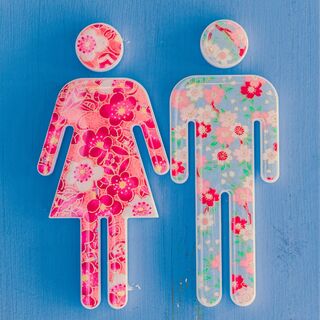Body Image
Body Shaming Is a Problem for Both Men and Women
Regardless of gender, people need to understand the pressure of body image.
Posted May 3, 2021 Reviewed by Chloe Williams
Key points
- Body image is scrutinized in Western cultures. Women and men experience the negative pressure of ideal body image in different ways.
- Men and women share body image risk factors and the consequences of negative body image, but women tend to be affected more severely.
- Men are more prone to "atypical" eating disorders than women, are generally quieter about body negativity, and seek treatment less frequently.
- More women than men seek cosmetic surgery, and women suffer from anorexia and bulimia by a 10 to 1 ratio compared to men, according to research.

Body image is scrutinized in Western cultures. We judge a book by its cover, and we have social media and Hollywood to thank. There is a standard, and if one does not meet the specifications of beauty and desirability, they will suffer the consequences. It is common to hear both boys and girls teased about appearance in childhood. Some grow up in households where an emphasis is placed on appearance or ideal body size or shape. Some might argue women are held to a more complicated and often unattainable standard. This may be due to women having a higher requirement to fit a mold than men and more body parts to judge.
The Bradley University "Body Project" revealed women and men, boys and girls, may share body image risk factors and consequences of negative body image. However, studies point toward males being affected a little less severely than females. The male body image is distinguished from female body image in several ways:
- Men seem to be more prone to "atypical" eating disorders and substance abuse than women.
- Men tend to be quieter about their body negativity, seeking treatment less frequently or holding off on treatment longer than women due to shame. Women, however, internalize more, body shame more, and body surveillance more than men.
- Some researchers say men are typically more satisfied with their physical appearance.
- But other researchers insist that men still struggle with body image: They say men are caught "feeling either too thin or too heavy to meet the male ideal."
I remember my son, who shares my tall and slim body type (he is 6'4"), complaining about it and sharing how he used humor to push back on body shaming. When he encountered the bullying, he would say, "Don't get too close, or you may get a paper cut." For males, the ideal masculine body type revolves around strength, muscles, and power. In contrast, women and the feminine body types are petite, small, and dainty. Big is associated with maleness; small is associated with femininity. This gender difference is also exhibited in how men and women talk and the quality of their voice. He has a booming voice, and she often talks softly. His voice will be lower-pitched, and hers high-pitched.
Nonverbally, men tend to expand and take up more space, and women shrink and coil up. Sometimes it feels like women are saying, "how small and insignificant can I be?"
Statistics About Body Image
DoSomething.org is a global movement of millions of young people trying to make a positive change about several issues impacting youth, including body shaming. The site identifies facts about body image. Body image is the way that someone perceives their body and assumes that others perceive them. People who are unhappy with their bodies and don't seek healthy nutrition information may develop eating disorders. "Eating disorders" are unhealthy relationships with food that may include fasting, constant dieting, or binging and purging. Approximately 91% of women are unhappy with their bodies and resort to dieting to achieve their ideal body shape, according to estimates. Unfortunately, only 5% of women naturally possess the body type often portrayed by Americans in the media. Women suffer from anorexia and bulimia by a 10 to 1 ratio compared to men.
Research also indicates more women than men seek cosmetic surgery; more than 40% of women and about 20% of men agreed they would consider cosmetic surgery in the future. The statistics remain relatively constant across gender, age, marital status, and race.
Regardless of gender, both women and men need to understand the negative societal pressures and media prescriptions for body image. The focus for both genders is to break from these family, media, and societal dictates.


